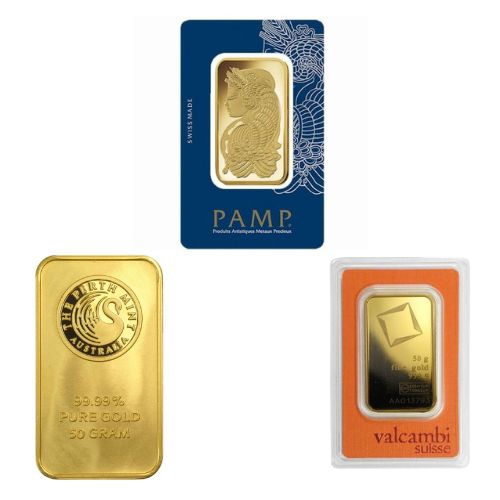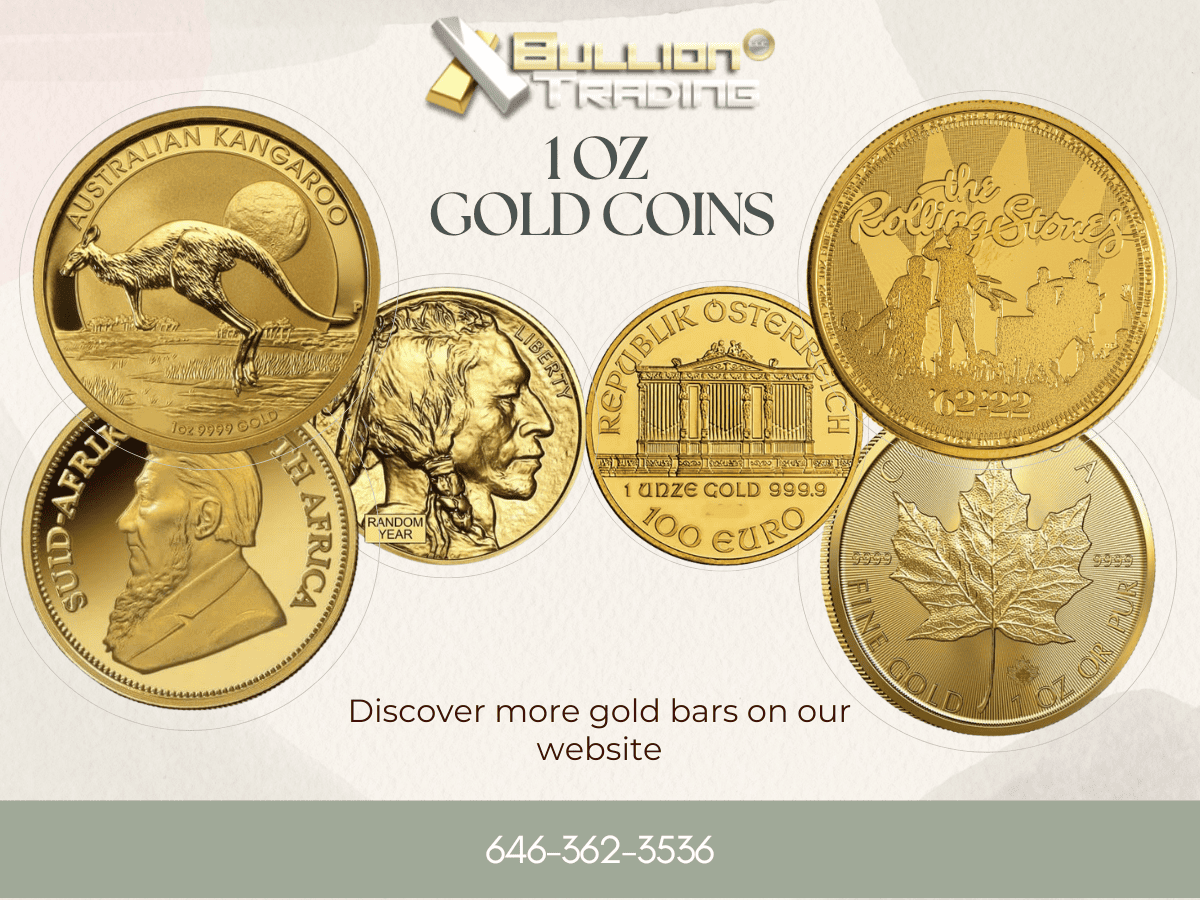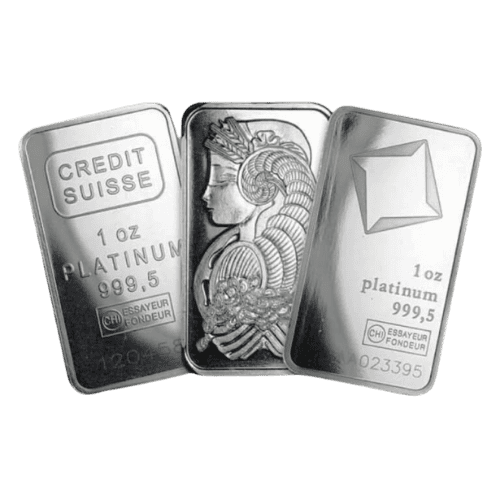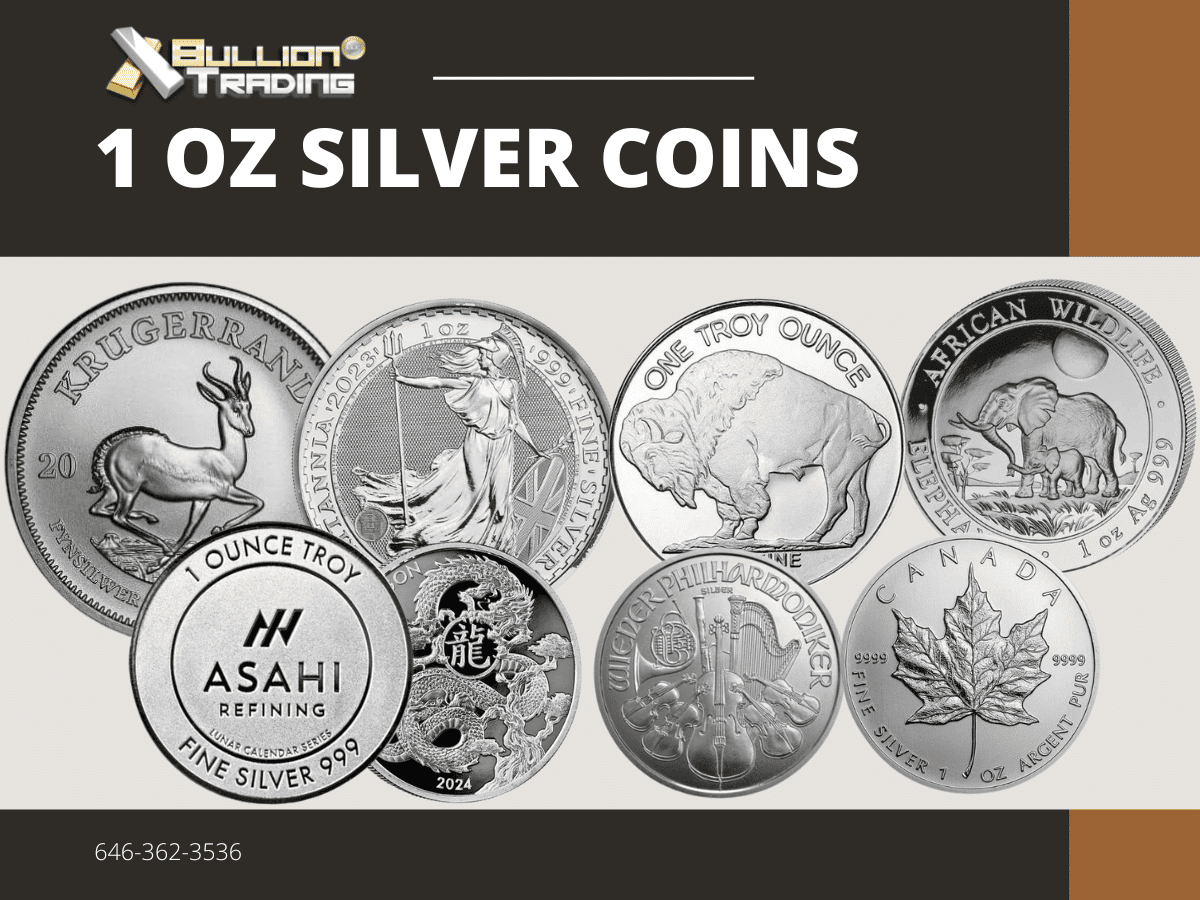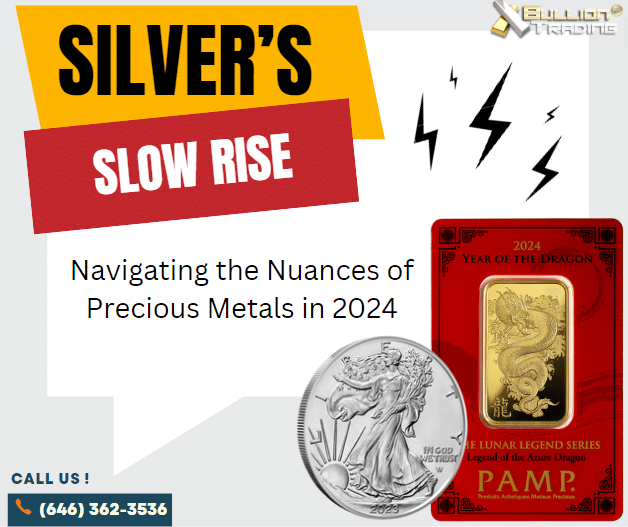The nuanced dynamics between gold and silver prices, particularly in 2024
The intriguing dance between gold and silver prices in 2024 offers a compelling narrative for those closely watching the precious metals market. As gold maintains its stature as a safe haven amid economic flux—gaining value in times of inflation, geopolitical unrest, and when the dollar weakens—silver’s trajectory paints a different picture. Characterized by its slow rise, silver often trails behind gold’s consistent movements, only to surge unexpectedly. This distinctive pattern of silver’s gradual ascent, set against the backdrop of gold’s steady growth, invites a deeper analysis. This not only captivate investors and financial analysts but also underscore the unique dynamics at play within the precious metals market. As we delve into the reasons behind silver’s slow rise, the insights garnered promise to enrich our understanding of the investment landscape in 2024, highlighting the importance of patience and timing in capitalizing on silver’s eventual upswing.
Understanding the Gold-Silver Ratio
Gold and silver have been coveted for centuries, not just for their beauty but for their role as economic stabilizers. Historically, both metals have served as hedges against inflation and economic downturns. However, their price movements are not always synchronized. Gold’s reputation as a safe haven asset sees it respond more promptly to global economic uncertainties. In contrast, silver, with its industrial applications, reacts to both its value as a precious metal and its demand in various industrial sectors.
One interesting observation is that while gold and silver prices are often highly correlated, there is sometimes a delay between their movements. In other words, it’s possible for gold to start rising before silver does. This delay can be anywhere from mere days to few months. While some experts believe it may be related to market behavior or investor sentiment, others speculate that there could be underlying economic factors at play as well.

*Source: Macrotrends
The Curious Case of Silver’s Lag
A meme circulating on the subreddit r/Silverbugs humorously captures the current sentiment among silver investors. It features a man imploring a personified silver, saying, “Come on, do something…” while the caption reads, “When gold is spiking, the silver market lies lifeless. It’s basically a doomsday scenario that could give life to silver value. At this point…”

*Source: Reddit
This meme reflects the frustration and anticipation of the silver investment community, illustrating the dramatic pauses in silver’s price movements before it eventually catches up through significant rallies. It underscores the patience required to invest in silver, suggesting that despite its current stagnation, a turnaround moment could dramatically alter the market landscape.
Impact of Federal Reserve’s Interest Rate Decisions
The Federal Reserve’s monetary policy, particularly its decision to raise interest rates to combat inflation, has far-reaching effects on the currency and commodity markets. Higher U.S. interest rates make dollar-denominated financial assets more attractive, leading to an influx of foreign investment in U.S. bonds. This demand for dollars strengthens the currency, making commodities like silver, priced in dollars, cheaper for holders of foreign currencies. As a result, the price of silver tends to decrease when the dollar is strong, highlighting silver’s sensitivity to U.S. monetary policy and its immediate impact on investment strategies.
When charting silver prices relative to the strength of the dollar, a reverse correlation is observed:

*Source: MarcoMicro
Silver’s Long-term Prospects Versus Short-term Challenges
While the short-term outlook for silver may seem discouraging due to the strong dollar and high U.S. interest rates, its long-term potential remains robust. Over decades, silver has proven to be a reliable store of value, offering protection against long-term inflationary trends. This distinction between short-term volatility and long-term stability is crucial for investors to consider when allocating their portfolios between gold and silver.
When plotting the price of silver against the dollar’s strength, a clear inverse relationship emerges—they move in opposite directions. This trend reinforces the notion that while silver faces short-term headwinds from a strong dollar and aggressive U.S. monetary policy, its long-term appeal as an investment remains intact. Investors seeking immediate inflation hedging might find gold a more reliable option, but those with a longer time horizon could benefit from silver’s eventual price corrections and rallies.
In conclusion
The divergent paths of gold and silver in the face of economic uncertainties, monetary policy changes, and market sentiment shifts present a complex but compelling narrative. While gold continues to shine as an immediate refuge in turbulent times, silver’s moment in the spotlight is delayed, yet potentially more dramatic in its ascent. Understanding these dynamics can help investors navigate the intricacies of precious metals investing, balancing short-term challenges with long-term opportunities.
